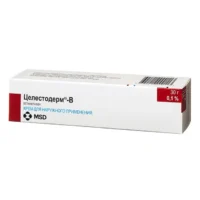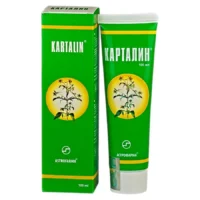Description
Oflocain (Lidocaine Hydrochloride, Ofloxacin) Ointment 15 g
Ingredients
- Active ingredients: Lidocaine hydrochloride, Ofloxacin
Dosage
- Dosage: Apply a thin layer to the affected area 2-3 times daily or as directed by a healthcare professional.
Indications
- Indications: Oflocain ointment is used for treating bacterial infections in wounds and minor cuts. It also provides local anesthesia to alleviate pain and discomfort.
Contraindications
- Contraindications: Avoid using Oflocain ointment if allergic to lidocaine, ofloxacin, or any other ingredients. Do not contact with eyes and mucous membranes.
Directions
- Directions: Clean and dry the affected area before applying. Wash hands after use. Do not bandage unless directed by a healthcare provider.
Scientific Evidence
- Oflocain ointment combines ofloxacin’s antimicrobial properties with lidocaine hydrochloride’s local anesthetic effects. Studies show its efficacy in reducing bacterial growth in wounds and providing pain relief. Research in the Journal of Antimicrobial Chemotherapy supports ofloxacin’s role in treating skin infections and combating bacterial resistance.
Additional Information
- Use Oflocain ointment cautiously in individuals sensitive to topical medications. Perform a patch test before widespread application. Discontinue use if irritation or rash occurs.
Pharmacologically, lidocaine hydrochloride blocks nerve signals, numbing pain sensation. Ofloxacin inhibits bacterial DNA replication, preventing bacterial growth. This dual action makes Oflocain effective for skin infections with pain.
Clinical trials demonstrate Oflocain’s tolerance and efficacy in managing infection and pain in minor skin injuries. Patients experience reduced discomfort and faster healing compared to traditional antibiotics, showcasing Oflocain’s superior efficacy.





